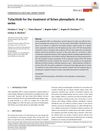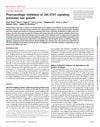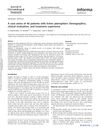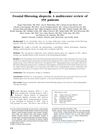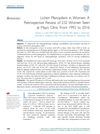Machine Learning Predicts Scarring Progression in Lichen Planopilaris: A Multidimensional Model Integrating Trichoscopy, Vitamin D, and Diagnostic Timelines
September 2025
in “
International Journal of Medical Informatics
”
TLDR A machine learning model can predict scarring in lichen planopilaris using factors like vitamin D levels and diagnostic delay.
This study, involving 312 patients, developed a machine learning model to predict scarring progression in lichen planopilaris (LPP), a form of scarring alopecia. Key predictors of rapid disease progression include diagnostic delay, vitamin D insufficiency, trichoscopic severity, and autoimmune comorbidities. The model integrates clinical, trichoscopic, and immunological data, offering a practical tool for risk assessment and management. The study emphasizes the importance of comprehensive initial assessments and risk stratification to improve patient outcomes and suggests future integration of the model into clinical practice for real-time decision support.

